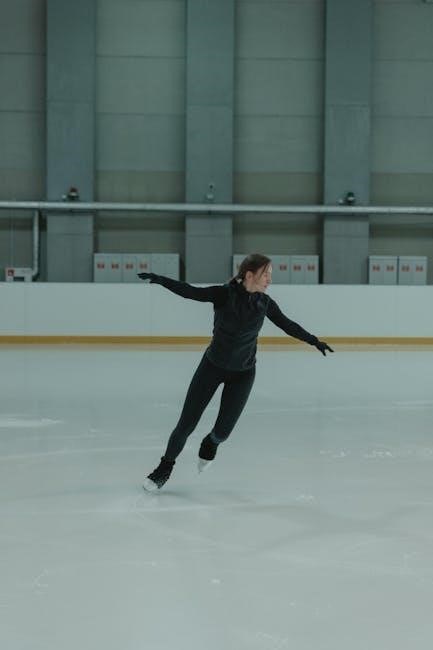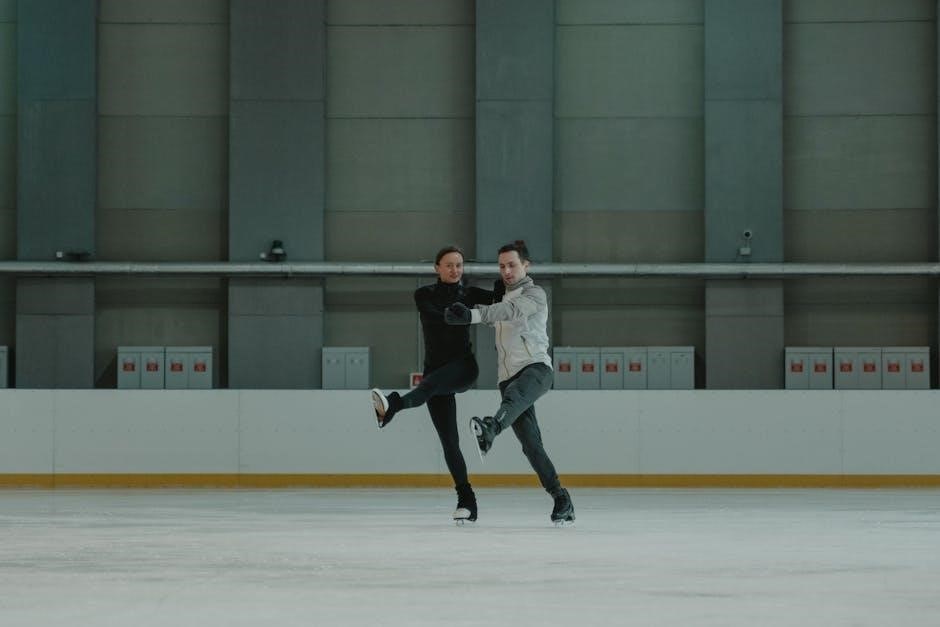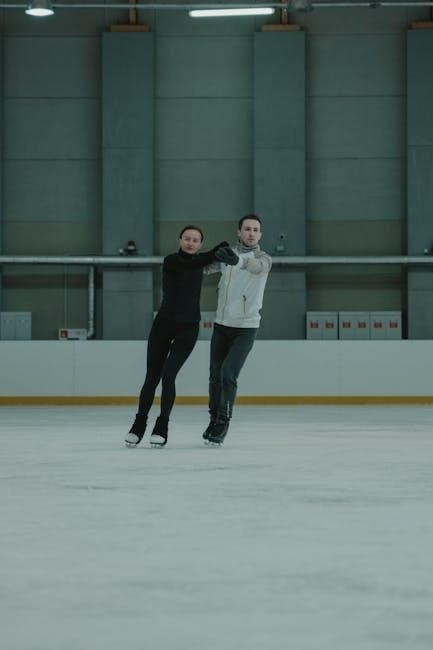
The Polyvagal Theory, developed by Dr. Stephen Porges, explains the nervous system’s response to safety and danger, influencing emotional states and social behaviors, offering insights into trauma recovery and stress management.

Understanding the Polyvagal Framework
The Polyvagal Framework, rooted in Dr. Stephen Porges’ Polyvagal Theory, outlines how the nervous system responds to safety, danger, and life-threatening situations through a hierarchy of strategies. It emphasizes neuroception, the subconscious detection of safety or threat, which shapes emotional and behavioral reactions. The framework highlights three main responses: ventral vagal (safety and connection), sympathetic (fight or flight), and dorsal vagal (freeze or collapse). This understanding provides a foundation for addressing trauma, stress, and emotional dysregulation, offering practical tools for enhancing resilience and fostering social engagement. By recognizing these patterns, individuals and therapists can better navigate emotional challenges and promote healing.

Polyvagal Exercises for Safety and Connection
Polyvagal exercises, such as diaphragmatic breathing and grounding techniques, enhance safety and connection by improving vagal tone and fostering social engagement and emotional resilience.
Exercises to Enhance Vagal Tone
Exercises to enhance vagal tone focus on stimulating the vagus nerve, promoting relaxation and emotional regulation. Techniques include diaphragmatic breathing, vocal toning, and progressive muscle relaxation. These practices help reduce stress by activating the parasympathetic nervous system, fostering a sense of safety and calm. Regular engagement in these exercises strengthens the vagus nerve’s function, improving heart rate variability and overall resilience to emotional challenges. By incorporating these exercises into daily routines, individuals can better manage stress, enhance social engagement, and improve mental health outcomes.
Practices for Building Nervous System Resilience

Building nervous system resilience involves practices that strengthen the body’s ability to respond to stress and recover efficiently. Techniques such as grounding exercises, mindful breathing, and self-compassion help regulate the nervous system. These practices teach individuals to recognize and shift between states of safety and distress, fostering adaptability. By integrating these methods into daily life, one can enhance their capacity to navigate challenges without becoming overwhelmed. Over time, consistent practice improves emotional stability, allowing for greater resilience in the face of adversity. These exercises align with the Polyvagal Theory’s principles of hierarchy and neuroception, promoting long-term nervous system health.

Activities to Promote Social Engagement
Activities that promote social engagement are rooted in the Polyvagal Theory’s emphasis on connection and safety. Eye contact exercises, active listening, and synchronized movements foster a sense of trust and belonging. Group practices, such as shared rhythmic activities or collaborative tasks, encourage nervous system alignment and cooperation. Playful interactions and humor also play a crucial role in creating a safe environment for social connection. These activities help individuals develop the ability to engage with others while maintaining a sense of personal safety, which is particularly beneficial for those who have experienced trauma or anxiety. Regular practice enhances communication skills and deepens interpersonal relationships, promoting emotional well-being and resilience.

The Role of the Vagus Nerve in Emotional Regulation
The vagus nerve is crucial for emotional regulation, controlling heart rate and breathing, and enabling the body to shift between stress and relaxation states, promoting emotional balance.
How the Vagus Nerve Influences Emotional Responses
The vagus nerve plays a central role in emotional regulation by modulating heart rate, breathing, and physiological responses to stress or safety cues. It acts as a bidirectional communication highway between the brain and body, influencing emotional reactivity and resilience. When the vagus nerve detects safety, it promotes relaxation and social engagement. Conversely, it triggers fight-or-flight responses in perceived danger. Polyvagal exercises, such as deep breathing and mindfulness practices, can strengthen vagal tone, enhancing emotional regulation and reducing stress. By improving vagal function, individuals can better navigate emotional challenges, fostering a sense of calm and connection in daily life.
Vagal Exercises to Reduce Stress and Anxiety
Vagal exercises are powerful tools to calm the nervous system and alleviate stress and anxiety. Techniques like deep breathing, progressive muscle relaxation, and mindfulness meditation activate the vagus nerve, promoting relaxation. These practices slow heart rate, lower blood pressure, and reduce cortisol levels. Regular engagement in vagal exercises strengthens the body’s ability to return to a state of safety and balance. Over time, these exercises enhance emotional resilience, making it easier to manage stress and anxiety. Incorporating them into daily routines can lead to long-term improvements in mental and physical well-being, fostering a sense of calm and connection.
The Impact of Vagal Tone on Mental Health
Vagal tone plays a crucial role in mental health by regulating the body’s response to stress and emotions. A high vagal tone is linked to better emotional resilience, while a low tone is associated with anxiety, depression, and trauma. When the vagus nerve functions optimally, it helps calm the nervous system, reducing feelings of overwhelm. Poor vagal tone can disrupt emotional balance, leading to heightened stress responses and mental health challenges. Strengthening the vagus nerve through targeted exercises can improve mental well-being, enhancing the ability to manage stress and fostering a sense of safety and connection. This directly supports overall mental health and emotional stability.
Practical Applications of Polyvagal Exercises
Polyvagal exercises enhance resilience and reduce stress by improving nervous system regulation. Techniques like breathwork and grounding can be applied in therapy or daily life to foster safety and connection.

Incorporating Polyvagal Techniques into Daily Life
Integrating Polyvagal exercises into daily routines can enhance emotional resilience and reduce stress. Simple practices like mindful breathing, grounding, and self-soothing activities help regulate the nervous system. These techniques foster a sense of safety and connection, making them ideal for managing daily challenges. By incorporating exercises like vagal toning and social engagement drills, individuals can improve their ability to respond to stressors. Regular practice strengthens the vagus nerve, promoting emotional balance and well-being. These accessible methods can be done anywhere, making them a practical tool for maintaining nervous system health and improving overall quality of life. Consistency is key to experiencing lasting benefits.
Using Polyvagal Exercises in Therapy Sessions
Polyvagal exercises are powerful tools in therapy, helping clients regulate their nervous systems and respond to stressors. Therapists can guide clients through techniques like breathwork, grounding, and vagal toning to enhance feelings of safety and connection. These exercises promote co-regulation, allowing clients to process trauma and build resilience. By incorporating Polyvagal-informed practices, therapists create a supportive environment for emotional healing. Regular use of these exercises in sessions can lead to improved emotional regulation, reduced anxiety, and stronger client-therapist relationships. This approach empowers clients to manage stress and cultivate a sense of security, fostering long-term emotional and mental well-being.

Case Studies and Real-World Applications
Real-world applications of Polyvagal exercises have proven effective in trauma recovery, enhancing emotional resilience, and improving mental health outcomes through practical integration into therapy sessions and daily routines.
Success Stories from Polyvagal Exercise Implementation
Dr. Stephen Porges’ Polyvagal Theory has revolutionized trauma recovery through its exercises. Individuals have reported significant improvements in emotional resilience and social engagement. Techniques from “Polyvagal Exercises for Safety and Connection” have empowered therapists to help clients process trauma effectively. By enhancing vagal tone, these practices reduce stress and anxiety, fostering a sense of safety and connection. Many success stories highlight improved mental health outcomes and better relationships. These exercises, grounded in neurophysiological principles, offer practical tools for daily life, making them invaluable for both clinicians and individuals seeking healing and growth. Their widespread implementation underscores their effectiveness in promoting lasting well-being and emotional balance.
Overcoming Trauma with Polyvagal-Informed Practices
Polyvagal-informed practices have transformed the way individuals heal from trauma by addressing the nervous system’s response to safety and danger. Exercises like diaphragmatic breathing and mindful listening help rewire the nervous system, reducing hypervigilance and fostering a sense of safety. These techniques, detailed in resources such as “Polyvagal Exercises for Safety and Connection,” empower individuals to move from survival modes to connection and calm. Therapists worldwide report significant progress in clients’ ability to process trauma without triggering overwhelming responses. By enhancing vagal tone, these practices promote resilience, allowing individuals to reclaim their lives and engage fully in relationships and daily activities with renewed confidence and emotional balance.
Improving Relationships Through Vagal Awareness
Polyvagal-informed practices enhance relationship dynamics by fostering emotional attunement and empathy. By understanding the vagus nerve’s role in social engagement, individuals can better navigate conflicts and communicate effectively. Exercises such as deep breathing and vocal toning, outlined in resources like “Polyvagal Exercises for Safety and Connection,” help regulate emotional responses, promoting trust and connection. These techniques encourage active listening and presence, reducing stress and anxiety in interactions. When both partners are vagally aware, relationships become more resilient, allowing for deeper intimacy and understanding. This approach not only strengthens personal connections but also creates a foundation for healthier, more fulfilling interactions in both professional and personal spheres.
Exploring Polyvagal exercises through resources like “Polyvagal Exercises for Safety and Connection” offers profound insights into nervous system regulation and emotional well-being. For deeper understanding, visit polyvagal PDF guides and explore Dr. Stephen Porges’ work.
Final Thoughts on the Importance of Polyvagal Exercises
Polyvagal exercises are transformative tools for enhancing nervous system regulation, emotional resilience, and social connection. By incorporating these practices into daily life, individuals can foster a sense of safety and balance, leading to improved mental and physical well-being. The accessibility of resources like “Polyvagal Exercises for Safety and Connection” and various PDF guides ensures that everyone can benefit from this groundbreaking approach. Embracing Polyvagal-informed techniques not only aids in personal growth but also strengthens therapeutic outcomes, making them an invaluable asset for both professionals and individuals seeking holistic wellness.

Recommended Reading and PDF Resources

For those seeking deeper understanding, “Polyvagal Exercises for Safety and Connection” by Dana is a cornerstone resource. Additionally, numerous PDF guides and e-books offer practical exercises and insights into the Polyvagal Theory. Titles like “The Polyvagal Theory in Therapy” and “Vagal Tone and Nervous System Regulation” provide accessible knowledge. Online platforms and mental health websites often share downloadable resources, making it easy to explore Polyvagal-informed practices. These materials are ideal for both professionals and individuals aiming to enhance emotional resilience and social engagement through evidence-based techniques.